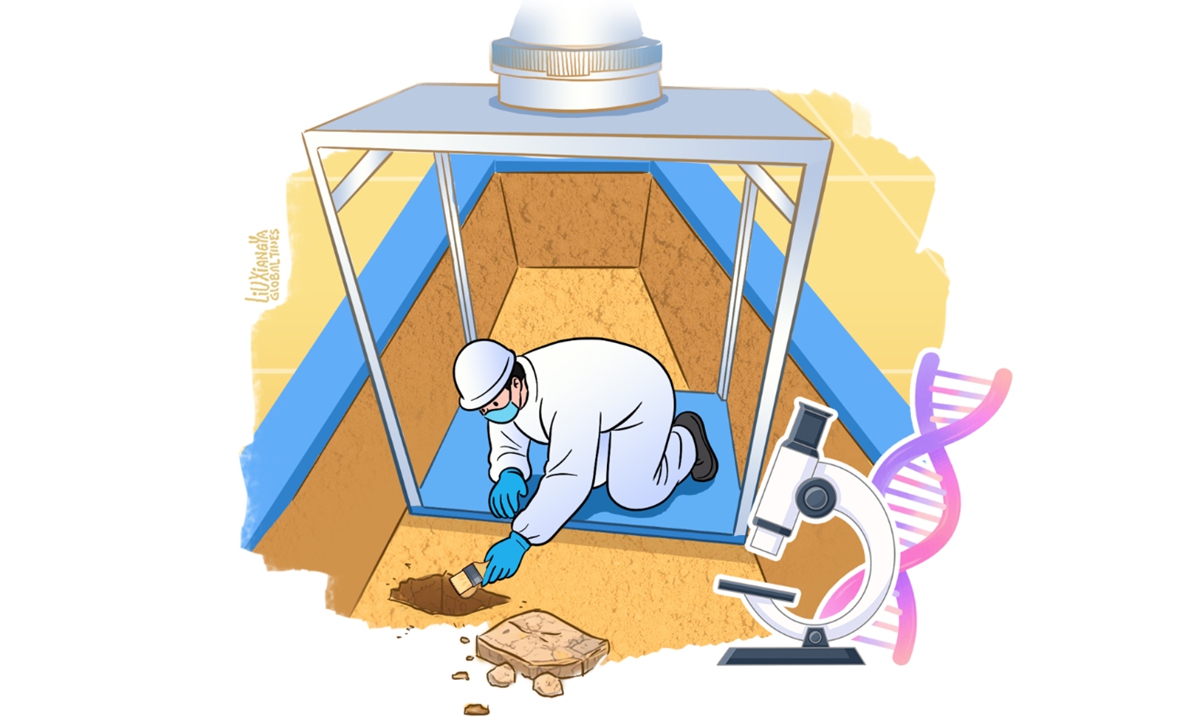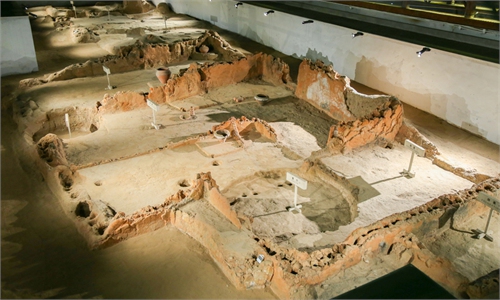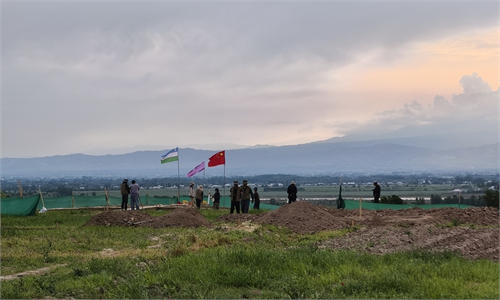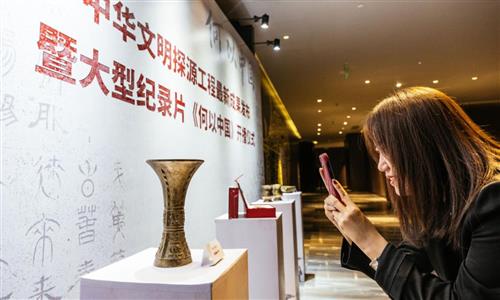ARTS / CULTURE & LEISURE
Chinese civilization origins project lays solid foundation for archaeological discoveries and museum construction

Illustration: Liu Xiangya/GT
In recent times, there have been a series of exciting archaeological discoveries and museum openings in China, such as the announcement by the Shanxi Culture Relics Bureau of the Chengbi Grottoes, which have been confirmed to date back to the Northern Qi (550-577) to Sui Dynasty (581-618), and the opening of the Dahecun Site Museum in Zhengzhou, Central China's Henan Province, which showcases over 1,000 artifacts from the Yangshao culture period, a culture that dates back 5,000 to 7,000 years ago.These significant events are closely linked to the smooth progress of a national-level project tracing the origins of the Chinese civilization.
Since its preparation in 2001 and official launch in 2004, this project has been committed to exploring the origins, formation, and early development of Chinese civilization in a multi-disciplinary, multi-angled, multi-layered, and all-round manner.
Wang Wei, chief expert of the project, told the Global Times that China's archaeological findings have provided substantial evidence for a million-year human history, a 10,000-year cultural history, and a more than 5,000-year civilization history.
As the project enters the final stage of its fifth phase in 2025, a wealth of new archaeological findings has emerged, and a certain number of new museum buildings have been opened.
This has provided fresh perspectives and abundant materials for a deeper understanding of the roots and developmental of Chinese civilization.
Amid the breakthroughs achieved during the fifth phase of the project, the integration of archaeological science and interdisciplinary collaboration has played a crucial role.
Chang Huaiying, director from the Institute of Archaeology under the Chinese Academy of Social Sciences, listed a series of examples to show how high-tech and multi-disciplines have strongly supported the origins project.
For instance, the advanced methods used to date the white lime plaster floor at the Bicun site in Xingxian county, North China's Shanxi Province, has filled a domestic technological gap.
The Bicun site, a huge stone city settlement of the Longshan Period around 4,000 years ago, is considered an important location for studying cultural and social exchanges on both sides of the Yellow River.
Furthermore, the combined studies of zooarchaeology, archaeobotany, environmental archaeology, as well as stable isotope analysis and ancient DNA analysis have revealed distinct regional differences in subsistence economies over the past 7,000 years.
It has been found that the Central Plains and northern regions in ancient China exhibited a mixed agricultural production system primarily based on millet and supplemented by broomcorn millet, soybeans, and rice.
These scientific methods have extended the historical timeline and taken the narrative of civilization from educated "speculation" to actual "confirmation."
In addition, the archaeological achievements of the project have also provided strong support for the opening of new museums in China.
Take the newly opened Dahecun Site Museum as an example. As the first thematic museum in China to offer a panoramic view of the Yangshao culture, it brings together the essence of over 30 sites and over 1,600 precious artifacts.
Its Yingshao Impressions exhibition merges immersive physical sets with cutting-edge digital technology, such as 3D mapping, holography, motion capture, and panoramic sound, creating an eight-act "digital stage play" that breathes life into millennia-old artifacts.
Similarly, the newly opened Luxian County Ruins Site Park and Museum in Beijing also deserves attention.
The museum features exhibition halls and site halls, displaying 289 unearthed cultural relics from the ancient Luxian county site, a significant archaeological find from the Han Dynasty (206BC-AD220).
These include jade wares, pottery, stone carvings, tiles, and other types of artifacts, fully showcasing the unbroken history of the site from the Warring States Period (475BC-221BC) to the Ming (1368-1644) and Qing (1644-1911) dynasties.
In the site hall, visitors can view the archaeological site and see Han Dynasty wells and pottery kilns, while using information technology to learn about the production and life of Han Dynasty residents.
Additionally, space has been reserved for future ongoing archaeological excavations, making the site hall a dynamic display space.
This isn't just history displayed; it's history dynamically experienced by visitors and showcasing the enduring processes of ethnic integration and cultural continuity central to the Chinese nation.
New generation cultural and museum institutions like the Dahecun Site Museum and the Luxian County Ruins Site Park and Museum are reshaping exhibition logic with the philosophy of "immersion, storytelling, and audience-centricity."
Through this, artifacts in museums are no longer too abstruse and instead truly "come alive."
The project tracing the origins of the Chinese civilization has laid a solid foundation for ongoing archaeological discoveries and museum construction.
It not only deepens our understanding of the origins and development of Chinese civilization but also brings ancient culture to life through innovative exhibition methods, allowing more people to appreciate the charm and depth of Chinese culture.
The author is a reporter with the Global Times. life@globaltimes.com.cn




